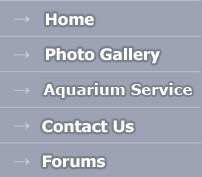PRODUCT DESCRIPTION:
Methylene Blue is effective against superficial fungal infections of fishes. The drug may be used as an alternative to Malachite Green for the control of fungus when it is known that the fish to be treated are sensitive. Methylene Blue is safe for use with fish eggs and fry for the prevention of fungal infections. As a secondary use, it is effective against some external protozoans, such as Ichthyophthirius (Ich), Chilodonella and Costia.
The properties of the drug as an oxygen transporter (it converts methemoglobin to the normal oxygen carrying component of fish blood, hemoglobin) allow it to be used in the treatment of known cyanide and nitrite poisoning of aquarium fishes. It has been suggested that newly arrived marine fish placed in Methylene Blue can have their survival rate increased as Methylene Blue aids in the reversal of nitrite and/or cyanide poisoning.
CONTRAINDICATIONS
Methylene Blue is not indicated for the treatment of Oodinium, bacterial infections, flukes (monogenetic trematodes) or for moderately-severe to severe fungal infections. It is not indicated for use as a net disinfectant or sterilizer.
The use of Methylene Blue is primarily for the control of fungus on eggs, and to assist the transport of oxygen in fish poisoned by cyanide and nitrite ion. Secondary uses are for the control of some external protozoan parasites of fishes. Methylene Blue is an alternative for treatment with other medications when prevailing factors preclude the use of another medication.This product is not intended to be used as a medication or chemotherapeutic agent for food fish, as regulated by the U.S. FDA (Food and Drug Administration) or the U.S. EPA (Environmental Protection Agency).
CAUTIONS
This product should not be used in recirculation systems that utilize biological filtration. Methylene Blue will interfere with the normal biological processes of nitrifying filter bacteria. Methylene Blue can also interfere with normal plant growth.
TOXICITY
Methylene Blue has a wide safety margin and is nontoxic when used as recommended. Fishes tolerate relatively high dosages without side effects.
SUGGESTED TREATMENT PROCEDURES
The following procedures are suggested for freshwater and marine aquariums and ponds. Methylene Blue is removed by activated carbon filtration. It will also be absorbed by porous materials such as rock, coral and wood. The product is best used in bare aquariums or ponds, especially if they are new. Methylene Blue may permanently color the silicone sealant in aquariums. At the conclusion of all treatments, a partial or complete water change should be made and activated carbon replaced in the filter.
Prevention or treatment of fungus on fish eggs:
(a) Remove carbon from the filter and continue to operate with mechanical filter media.
(b) Add 1 teaspoon of 2.303% Methylene Blue per 10 gallons of water. This produces a concentration of 3 ppm. For increased concentrations, add approximately 1/3 teaspoon (1.64 ml) per 10 gallons for each required 1 ppm increase.
(c) Only one application is needed. Treatment should continue for 3 days past free swimming stage or for livebearers 2 days after birth.
Prevention or treatment of fungus or external parasitic protozoans:
(a) Remove carbon filter and continue to operate with mechanical filter media throughout the treatment period.
(b) Add 1 teaspoon of 2.303% Methylene Blue per 10 gallons of water. This produces a concentration of 3 ppm. Continue the treatment for 3 to 5 days.
(c) Make a water change as noted and replace the filter carbon at the conclusion of the treatment.
Note: If the fish are heavily infected with external gill and/or skin parasites, it is advisable to modify the above procedure by adding 1 teaspoon of Acriflavine ( Kordon's 3.84% Trypaflavine solution is recommended) per 10 gallons of water in combination with Methylene Blue. Gill parasites such as Oodinium cause severe pathological damage to the host, which results in respiratory distress. Acriflavine aids in reducing this distress by acting as an oxygen transporter. Refer to the product data sheet concerning the proper use of Acriflavine (KPD-29) in established aquariums and ponds before using this optional procedure.
As an aid in reversal of nitrite (NO2-) or cyanide (CN-) poisoning of marine and freshwater aquarium fishes:
(a) Remove carbon filter and continue to operate with mechanical filter media throughout the treatment period.
(b) Add 1 teaspoon of 2.303% Methylene Blue per 10 gallons of water. This produces a concentration of 3 ppm. Continue the treatment for 3 to 5 days.
(c) Make a water change as noted and replace the filter carbon at the conclusion of the treatment. parasite protozoans."
For use as a dip for treatment of fungus or external parasitic protozoans and cyanide poisoning:
(a) Prepare a nonmetallic container of sufficient size to contain the fish to be treated by adding water similar to the original aquarium.
(b) Add 5 teaspoons (24.65 ml) per 3 gallons of water. This produces a concentration of 50 ppm. It is not recommended that the concentration be increased beyond 50 ppm.
(c) Place fishes to be treated in this solution for no longer than 10 seconds.
(d) Return fish to original aquarium.





